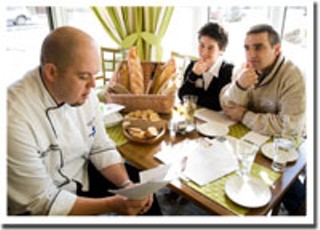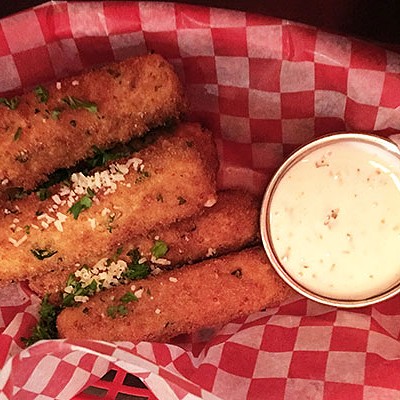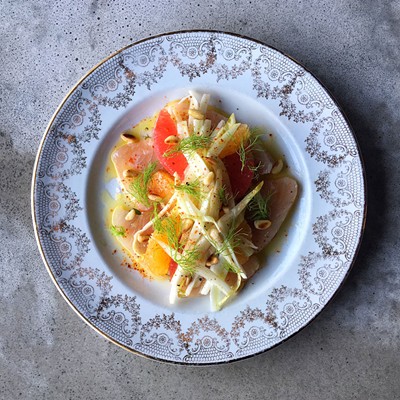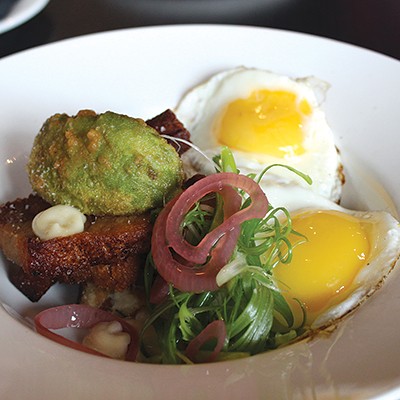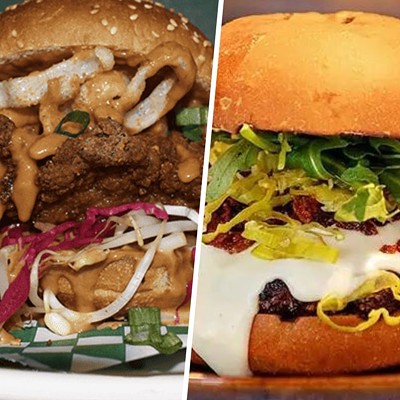The dining room at Saege Bistro is crowded, voices rising above the sound of an indoor waterfall. Early-afternoon sun highlights a basket of artisanal bread, a plate of cheese, an arrangement of dried herbs. People are tasting food, trading business cards, listening intently.
But this isn’t an ordinary lunch at Saege. In fact, it’s not lunch at all.
The people in the room are local organic farmers and local chefs. They’re here for a farmer-chef meet-and-greet, organized jointly by the Atlantic Canadian Organic Regional Network, the Nova Scotia Department of Agriculture and Agrapoint, an agricultural consulting service. The networking opportunity, inspired by similar events organized by Ecotrust in Portland, Oregon, has been designed to allow farmers and chefs to put faces—and produce lists—to names, and it’s part of a growing movement to foster connections between the people who grow the food, those who cook it and those who eat it.
Co-organizer Jamey Coughlin, of the NSDA, says it’s about building on what farmers and chefs already have in common. “Food producers and chefs share both a love of good food and a desire to differentiate the food that they produce or serve as food that’s great quality,” he says. “Building good relationships between farmers and chefs gives that food a value beyond price.”
Like any good relationship, the farmer-chef dynamic requires hard work and open communication. It can also take a greater effort to match supply and demand. Unlike major grocery stores or wholesale food suppliers, which can supply a wide variety of local and imported food year round, independent organic food producers can’t always provide what a chef wants, when the chef wants it.
“Finding a consistent, reliable supply of produce is definitely one of the major challenges of dealing with organic farmers,” says Saege chef Geir Simensen. “It’s much easier to buy produce from Pete’s Frootique or from Sisco than from farmers and that can be a difficult habit to break.” Developing a close working relationship with farmers means that chefs are better able to plan menus around the seasonal availability of local produce and by planning, make the most of what’s available. “I might call a lamb farmer and ask for 60 racks of lamb,” he says, “and be met by silence on the other end of the line. The farmer is thinking, ‘What am I going to do with the rest of the lamb?’ Now, I try to work that into my order.”
One such relationship Simensen has worked to develop is with Dave and Nancy Roberts of Four Seasons Farm in Maitland. The Roberts sell much of what they grow at the Halifax Farmers’ Market, and also sell greens and vegetables to Saege. They speak several times a week to co-ordinate menus with crop availability. It requires a long-term commitment on both parts and a careful analysis of the financial realities, says Dave Roberts. “Chefs who are well-established need to have a good reason to replace suppliers they’ve been working with for a long time. As a farmer, you need to meet with them, find out what they need and show them exactly what you can give them. It’s a lot of work.”
Lil McPherson of the Wooden Monkey has also learned to work within the constraints of dealing with small local suppliers—she works with almost 40 local organic food producers. “If the chicken farmer’s truck breaks down, then you don’t serve chicken that night,” she says, “but it’s still worth it.”
It’s a workload many farmers seem interested in taking on too, especially as a means of diversifying—at the Saege event, farmers outnumber chefs roughly three to one. Many at the meet-and-greet are familiar from the Halifax Farmers’ Market: Others have their own stores, or sell to local vendors.
Jeanita Rand, of Foxhill Cheese in Port Williams, sells her cheese to several local restaurants such as Saege and Fid, as well as at the Farmers’ Market and at a store on the family farm. She sees lots of opportunity in an event like this. “I’m hoping to solidify and build upon the relationships I already have with chefs,” she says, but she also echoes a sentiment voiced by McPherson, “Local people eating local food prepared by local chefs…it’s win-win for everyone involved.”

